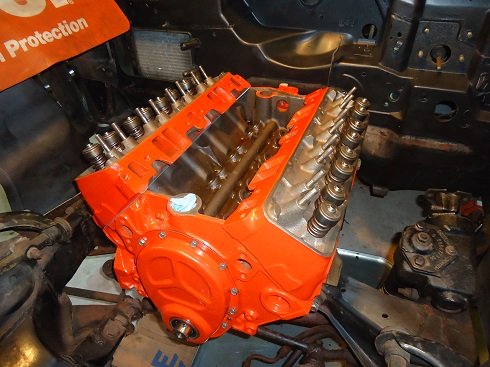Chevy Small Block History 1965-1969
Article by Mark Trotta
1965 - Although somewhat overshadowed by the introduction of the 396 big-block, Chevy small blocks were more potent than ever, and continued their upward spiral in horsepower throughout the sixties.
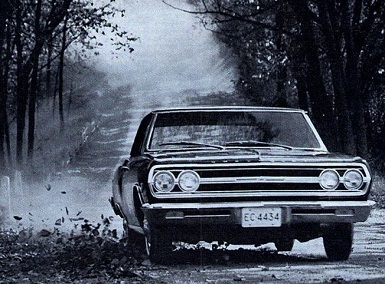
L79 327/350 Horsepower
Available in Corvettes, full-size Chevy's, and Chevelle's with the Super Sport package, the 350-horsepower 327ci L79 was GM's first high-performance hydraulic lifter cam motor.
Performance parts included forged steel crank and rods, 11:1 pistons, 4-barrel carb, aluminum intake manifold, and dual snorkel chrome plated air cleaner. Cylinder heads were fitted with large 2.02" intake valves. Dual exhaust was standard.
Producing 350 horsepower and 360 ft/lbs of torque, the L79 327 quickly established itself as a serious performance motor.
The L79 camshaft (3863151) became very popular in the aftermarket, and is still a popular street cam.
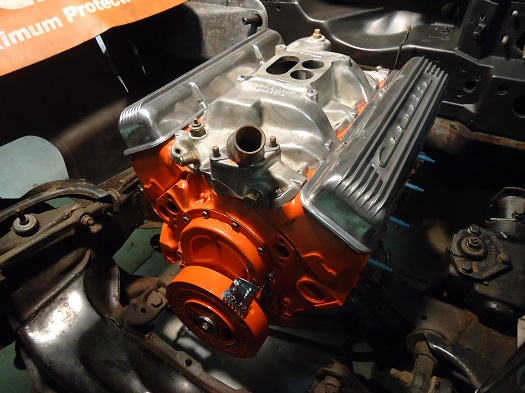
When installed in Corvettes, L79 engines were fitted with cast aluminum “Corvette” script valve covers.
**********************
1965 Corvette
Base engine was an L75 327 small-block producing 300-horsepower. Optional motors included the 350 horsepower L79, 365 horsepower L76, and fuel-injected L84 RamJet.
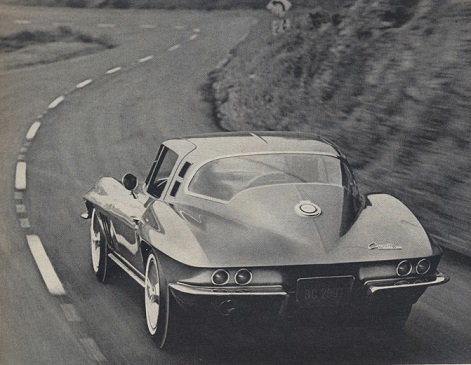
Also available mid-year was the new 396 big-block.
L76 327/365 Horsepower
Introduced in 1964, the L76 327ci V8 was optional only in Corvettes. Power output was 365 horsepower and 350 lb-ft of torque.
L76 vs L79 SBC
The main difference between these two motors is the camshaft. The L76 has a solid lifter ("30-30") cam, and the L79 has a hydraulic lifter ("151") cam.
**********************
RamJet L84 327/375 Horsepower
With compression at 11:1, engine output rose to 375 horsepower from the previous year. This would be the last year of L84 Ramjet fuel injected motor.
Until the appearance of the 385-horsepower LS6 in 2001, the L84 was the most powerful naturally aspirated, single-cam small-block Chevrolet produced.
**********************
1965 283
On the other side of the performance spectrum, a 195- or 220-hp 283 was available in Chevelle's, Chevy II's, and full-size Chevy models.
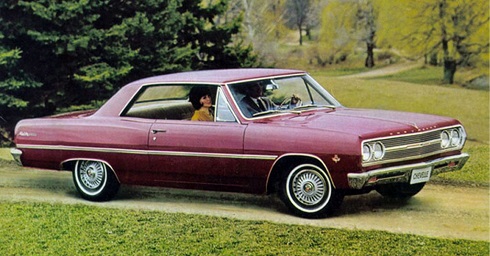
**********************
1966 - The 300-hp L75 and 350-hp L79 327 engines were carried over from last year. The L76 was no longer offered.
283 SBC - A 195 horsepower version of the 283 was available in Chevelle, Chevy II, and full-size models. A 220-hp version was available in full-size models.
1966 Corvette
Base engine remained the 300-horsepower L75 327, with the L79 327 optional. Also optional were a pair of big-blocks.
**********************
1967 - The 350 small-block debuted along with the new Camaro, and was not offered in other Chevy cars or light-duty trucks until 1968.
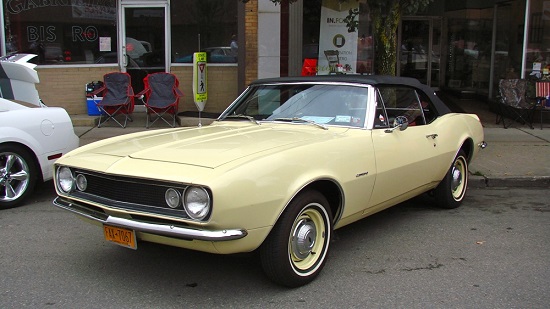
350 Chevy Small-Block
An increase of piston stroke from 3.25" to 3.48" brought small-block displacement to 350 cubic-inches. The crankshaft main-journal diameter was increased from 2.30" of the earlier blocks to 2.45", and rod-journal size increased from 2.00" to 2.10".
Small-block connecting rods were now stronger, having 3/8" diameter cap-bolts versus the previous 11/32" diameter cap-bolts.
A 1967 Camaro could be had with a 230 or 250 six-cylinder engine, a 210-hp or 275-hp 327, a 302 or 350 small-block, or 396 big-block V8.
L48 350 - Optional with the Super Sport option, the 300 horsepower 350 small-block featured a hydraulic lifter camshaft and 4bbl Quadrajet carburetor.
**********************
1967 Corvette
Base engine was now the L79 327ci small-block. All optional Corvette motors were big-blocks.
**********************
Last Year of 283 Chevy
1968 - In it's last year of production, a 195 horsepower version of the 283 was available in Chevelle, Chevy II, and full-size Chevy models.
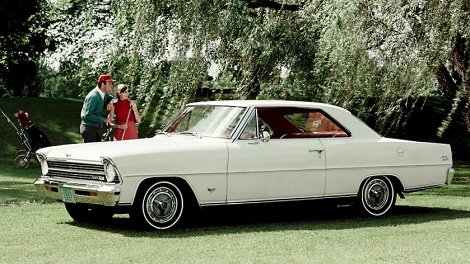
**********************
307 Small-Block (1968-1973)
To give more power to their increasingly heavier cars while also help new emission standards, Chevrolet began replacing the 283 small block with a longer-stroke 307 cubic-inch displacement.
The crankshaft was sourced from the 327 (3.25" stroke) and cylinder bore was kept the same as the 283 (3.875"). Since 307 cylinder heads were designed to help emission ratings, they were low performance engines from the factory.
Still available was the 327 engine, now upgraded to the larger diameter 350 crankshaft. Both 327 and 350 small blocks were produced in 1967, 1968, and 1969.
**********************
1968 Corvette
Underneath the hood of the beautiful new Corvette, several choices of small blocks and big blocks were available.
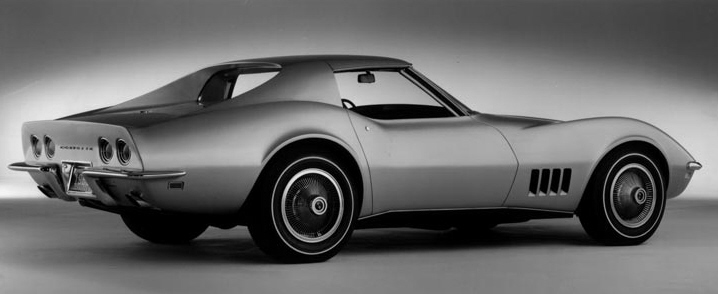
Base engine was a 300-horsepower, L79 327ci small-block V8, with optional 350 horsepower version. All optional Corvette motors were big-blocks.
**********************
Last Year of 327 Chevy
1969 was the last year of Chevy 327 V8 production. It was the standard V8 in full-size Chevys, and a low-cost option over the base 307ci V8 in Chevelle, Camaro, and Nova.
1969 - This year saw the 350 small block installed in Camaros, Corvettes, Caprices, Impalas, El Caminos, Chevelles, Novas, as well as light-duty Chevy and GMC trucks.
There were both 250 and 255 hp versions of the 350, the difference was intake manifold and carb. Both engines came with 441 casting heads with large chambers (78 cc) and 1.94" intake valves.
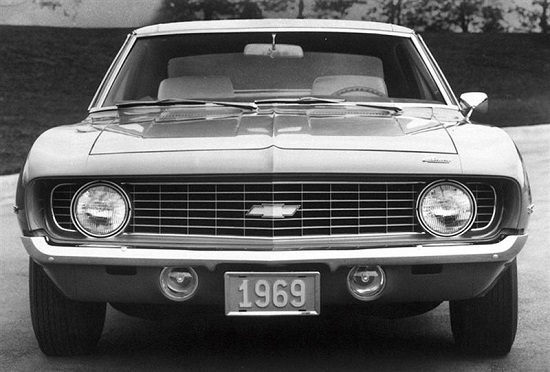
L48 350 - 300 horsepower, hydraulic lifter camshaft, cast-iron intake with 4bbl Quadrajet carburetor, casting number 041 or 186 heads with small (64cc) chambers and 1.94" intake valves.
The L48 350 used camshaft 3896929.
L46 350 - 350 horsepower, hydraulic lifter camshaft, cast-iron 4-barrel intake with Quadrajet carb, 11.0:1 compression, 2.02" intake valves and 1.60" exhaust valves.
**********************
1969 Corvette
For 1969, base motor was the L46 350 small-block. All optional motors were big-blocks.
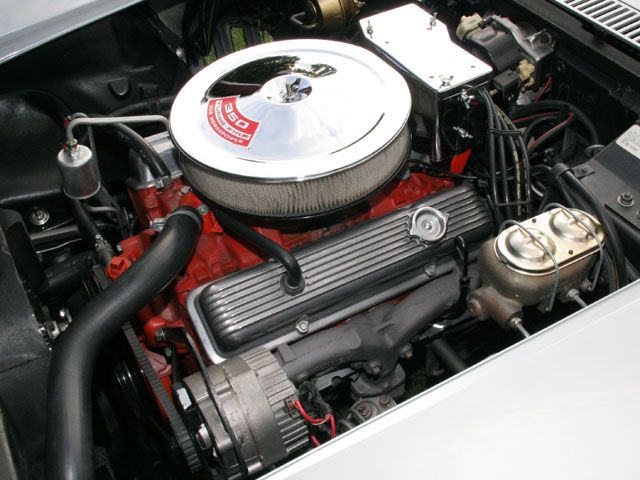
The L46 produced 350 HP at 5,600 RPM, and 380 lb-ft of torque at 3,600 RPM.
**********************
302 Chevy Small-Block
Chevy wanted their new Camaro pony car to be competitive in Trans-Am racing. Sanctioning rules limited engine displacement to 5.0 litres (305 cubic-inches).
An easy solution was to place a 283 crankshaft (3.00-inch stroke) into a 327 block (4.00-inch bore), which made a short-stroke, high-revving, 302 cubic-inch motor. This was not a new idea--hot rodders had been doing this since the early sixties.
Introduced in December of 1966, the 302 engine came with the Z28 option on 1967 Camaro models. Performance parts included an aluminum high rise dual-plane intake manifold, 780-cfm 4-barrel Holley carburetor, 2.02" intake valves with 1.60" exhaust valves, and solid-lifter camshaft.
Early 302 small blocks were equipped with a forged-steel crankshaft and forged pistons. Compression ratio was 11.0:1.
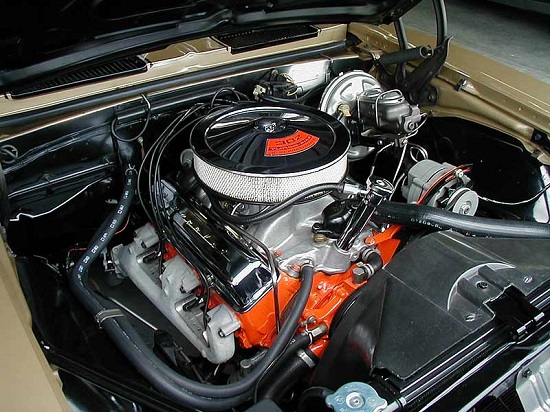
302 Chevy Small-Block (1969)
Whereas 1967 and 1968 302's were based on the 327 block, the 1969 302 motor was based on the 350 block. By having larger main journals and four-bolt main caps, they were slightly stronger than the 327-based 302 motors. The 4.00-inch bore and 3.00-inch stroke remained the same.
The 302 Chevy small-block was purposely under-rated by the factory at 290 horsepower. Actual output was closer to 375 horsepower. The camshaft fitted to Z/28 engines was GM # 3849346. It is more commonly known as the '30-30' camshaft, so named because both intake and exhaust valve lash were set at .030.
**********************
Engine Code Stamping Numbers
All Chevy engines are stamped with an engine ID code, which will include assembly plant code, production date and suffix code. V8 codes are stamped on a pad just forward of the right side (passenger) cylinder head.
**********************
Related Articles:
Chevy Small-Block History 1955-1959
Chevy Small-Block History 1960-1964
Best Heads For Gen-1 Small-Block Chevy
Tools Needed For An Engine Build
Chevy Stovebolt Six
Old School Small-Block Chevy Build
